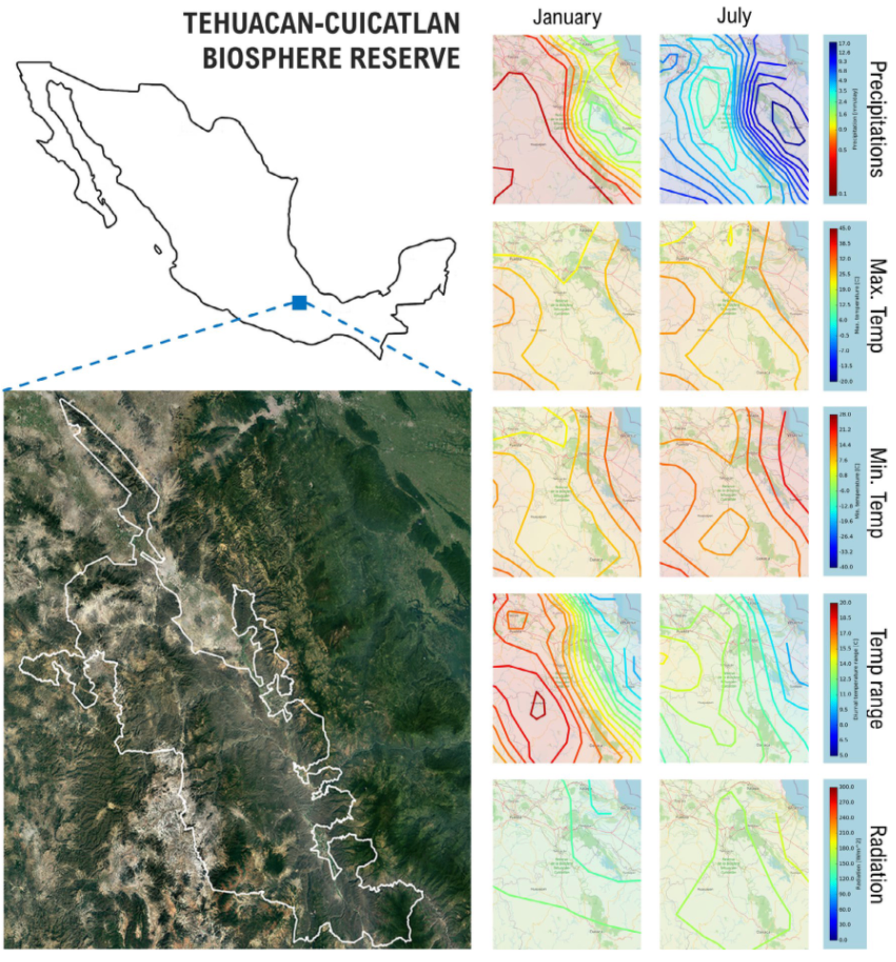Desert Fungi: Mexico’s Tehuacán-Cuicatlán Reserve Reveals A Microbial Goldmine in Arid Lands
- Marc Violo

- Jul 29
- 3 min read
The Tehuacán-Cuicatlán Biosphere Reserve, spanning 10,000 km² in Mexico, is a hotspot for species adapted to extreme drought. While its cacti and endemic animals have long drawn attention, a new study by researchers from the Centro de Investigación en Biotecnología, Universidad Autónoma del Estado de Morelos, Mexico, reveals an overlooked world of microbial life.
Researchers have documented 436 fungal taxa thriving in this harsh landscape, including 266 true fungi and 170 myxomycetes. These organisms aren't just surviving - they're actively engineering their ecosystem by cycling nutrients, stabilising soils, and supporting plant health in one of Mexico's most arid regions.

Why Fungi Matter in the Desert
In arid zones like Tehuacán-Cuicatlán, where annual rainfall averages a meagre 300-500 mm, fungi perform critical ecological functions. Mycorrhizal species form symbiotic relationships with plant roots, particularly cacti, significantly enhancing their ability to absorb water and nutrients.
Meanwhile, soil fungi break down organic matter in these nutrient-poor conditions, while their extensive hyphal networks physically bind soil particles together, helping to prevent erosion in this fragile environment. Despite their importance, fungal diversity in the region remained poorly documented until now, with previous studies primarily focusing on more visible plants and animals.

Key Findings from the First Comprehensive Inventory
The research team's systematic review uncovered several important patterns in fungal distribution. Myxomycetes emerged as the most diverse group with 170 identified taxa, including species like Didymium tehuacanense that were first described in this reserve. Ascomycota followed with 147 species, while Basidiomycota accounted for 102 species, though many specimens remain unidentified at the species level. The study also documented 15 arbuscular mycorrhizal fungi species that are crucial for cactus survival, though this represents just 10% of Mexico's known diversity in this ecologically important group.
These findings highlight significant knowledge gaps in our understanding of desert fungi. Current estimates suggest only 15% of Mexico's projected fungal species have been formally described, indicating tremendous potential for new discoveries in Tehuacán-Cuicatlán's varied microhabitats
Extremophiles with Biotech Potential
The fungi of Tehuacán-Cuicatlán have evolved remarkable survival strategies to endure the reserve's extreme conditions, including high temperatures, intense UV radiation, and prolonged drought periods. These polyextremotolerant species may offer valuable resources for biotechnology applications.
Their unique adaptations could yield novel enzymes capable of functioning in industrial processes under harsh conditions, while their metabolic pathways might produce bioactive compounds with pharmaceutical potential. Perhaps most importantly, these resilient fungi could be developed into climate-resilient symbionts to improve crop tolerance in increasingly drought-prone agricultural soils.
Threats and Conservation Challenges
Despite their ecological importance, these fungal communities face growing threats. Climate change and shifting land-use patterns are putting pressure on the reserve's delicate soils, which are already impacted by expanding agriculture and deforestation activities. Researchers emphasise the urgent need for studies tracking fungal responses to environmental changes, as certain sensitive species may serve as early warning bioindicators of ecosystem stress.

From Discovery to Application
The study outlines several critical priorities for future research. Advanced culturing techniques will be essential to grow and study the many desert fungi species that resist traditional laboratory cultivation methods. DNA barcoding approaches could dramatically accelerate the process of species identification and classification. Perhaps most practically, field trials should test the effectiveness of fungal inoculants in supporting cactus restoration efforts and enhancing plant survival in degraded areas.
As one of the researchers Ramón Alberto Batista-García explains, "this reserve functions as a natural laboratory for studying extremophile fungi. Understanding their adaptation mechanisms here could provide solutions for global challenges like food security and land degradation."
The fungal networks of Tehuacán-Cuicatlán serve as a powerful reminder that biodiversity extends far beyond what's visible to the naked eye. As desertification pressures increase worldwide, these hidden microbial communities may hold vital clues for sustaining life - both in fragile arid ecosystems and in human-managed landscapes facing similar environmental stresses.




